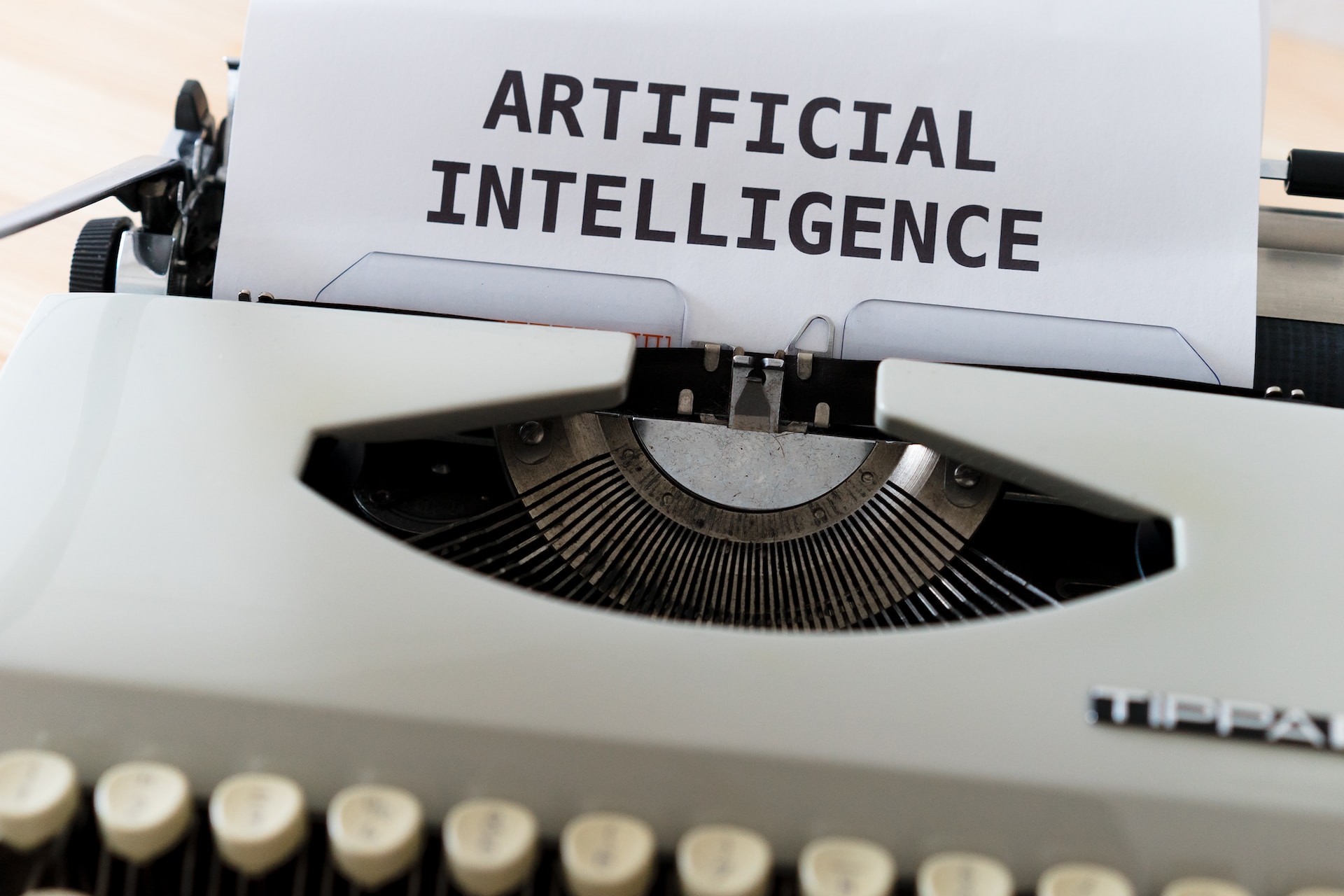Today, discussions about artificial intelligence (AI) and machine intelligence (MI) are more prevalent than ever (especially with the growing popularity of tools like
ChatGPT and
RealAI).
The frequency of these discussions isn’t particularly surprising when you consider that the AI market is expected to reach a
$407 billion valuation by 2027. However, despite the number of times AI and MI get discussed, there’s still much confusion about their differences.
Many people use the terms “artificial intelligence” and “machine intelligence” interchangeably. However, they’re not synonyms.
The basic definition of AI describes artificial intelligence as a computer system’s ability to mimic human cognitive abilities (learning, problem-solving, etc.). With AI’s help, computer systems can simulate human reasoning to learn new information, make decisions, and more.
Machine intelligence (also known as machine learning) is a subset of artificial intelligence. It specifically refers to the use of mathematical models that help computers learn without direct instructions. MI allows computer systems to keep learning and improving on their own based on continuous experience.

There are several types of machine learning, including supervised, unsupervised, and reinforcement learning.
Because so many people mistakenly think AI and MI are the same, clarifying their distinctions is essential. The ability to differentiate between the two is especially important for those pursuing a career in either sector.
This article discusses the primary differences between machine intelligence vs. artificial intelligence in detail and explores the benefits of each. It also offers examples of how they’re applied in various industries and suggestions for expanding your knowledge of both topics.
Key Differentiating Characteristics of AI and MI
It’s easier to understand the difference between machine intelligence vs. artificial intelligence if you know more about each and their unique characteristics.
Many critical factors separate AI and MI, including those outlined in the following lists:
Artificial Intelligence Characteristics
Characteristics of AI may include -- but aren’t limited to -- the following:
AI possesses a broad range of applications: AI is a broad concept with many applications underneath it -- such as machine intelligence,
generative AI, etc.
AI can work with all types of data: It can work with structured, semi-structured, and unstructured data, allowing for more flexibility and options for users.
AI systems can acquire knowledge, engage in reasoning, and self-correct behavior: These actions are possible with the help of logic and decision trees.
AI enables machines to emulate human intelligence: It allows them to solve a wide range of problems as humans do.
Today, artificial intelligence is incorporated into various tools and technologies people use regularly, including smartphones and voice assistants (such as Siri or Google Assistant). Companies also use AI to automate tasks, speed up decision-making, and improve customer service processes.
Machine Learning Characteristics
Characteristics of machine learning may include, but aren’t limited to, the following:
ML enables autonomous learning for machines: It uses algorithms to gain insights and recognize patterns automatically. It then applies that learning to make better decisions in the future.
Machine Learning has diverse applications: For example, social media platforms use machine learning to provide users with more personalized experiences. Virtual assistants can also use machine learning to provide results tailored to each user’s preferences.
ML employs self-learning algorithms to generate predictive models: Predictive modeling is a type of data-mining technology. It analyzes historical and current data and then generates a model to predict future outcomes.
ML can work with structured and semi-structured data: It’s incapable of working with unstructured data, whereas other subsets of artificial intelligence are.
Machine learning can be critical in numerous business processes, from predicting price changes to teaching cars to drive autonomously.

How AI and MI Work Together
Although AI and MI are not synonyms, they are strongly linked. Intelligent devices use artificial intelligence to think like humans and perform tasks independently. However, they develop their intelligence through machine learning.
The Extensive Benefits Offered by AI and Machine Learning
Both artificial intelligence and machine learning can help businesses expand their offerings, increase efficiency and productivity, and maximize earnings.
The following are some of the most noteworthy benefits of AI and machine learning in the professional world:
1. Expanded Data Sources
Both artificial intelligence and machine learning can work with structured and semi-structured data. Artificial intelligence can also work with unstructured data.
The list below provides examples of each data source:
Structured data: Quantitative data; Contains measurable numeric values, including numbers, dates, times, etc.
Unstructured data: Qualitative data that is typically text-heavy and non-numeric; examples include images, audio, video, and word-processed documents.
Semi-structured data: Not purely quantitative or qualitative; it does not conform to tabular formats (like structured data), but it has an inherent hierarchy (meaning it’s not entirely unstructured).
With the help of AI and machine learning, organizations can work with a wide range of data sources and discover more valuable insights.
2. Accelerated Decision-Making Processes
Artificial intelligence and machine learning also allow for faster decision-making. The following are some specific ways they assist with these processes:
Process and analyze large quantities of data in a short period: Because they don’t have to evaluate data manually, organizations can save time without sacrificing valuable data, meaning they can make more informed decisions sooner.
Solve complex problems more easily: AI assists with decision-making by picking up on nuances and patterns humans may struggle to see. This increased information allows professionals to see the complete picture more quickly and make better choices as a result.
Predict outcomes: AI and machine learning can predict outcomes based on data. Since they’re data-driven, these predictions are more trustworthy and likely to be accurate (meaning professionals can trust them).
Understand customers: Professionals can use AI and MI applications to gather valuable insights on customers and members of their target audience. These insights allow for better decision-making and more efficient planning.
3. Enhanced Operational Efficiency
Faster decision-making (without skipping essential details or missing key data points) allows organizations to run more efficiently. This list features some other ways that MI and AI can increase operational efficiency:
Faster data analysis and reporting: Because AI and machine learning allow organizations to analyze large quantities of data almost instantly, it’s easier to pick up on valuable insights and incorporate them into reports to share with team members, stakeholders, etc.
24/7 service availability: AI-powered tools like chatbots never need to clock out and take a break. They can function around the clock, allowing businesses to assist customers at any time, even in the middle of the night.
Automating time-consuming processes: Artificial intelligence and machine learning can also be used to automate time-consuming processes. For example, organizations can increase cyber security by using AI to take in large amounts of data and machine learning to identify patterns that could potentially indicate malicious behavior.
4. Seamless Integration of Analytics
Data analytics integration combines data from various sources into a single view. Artificial intelligence and machine learning can assist with data integration in several ways, including the following:
Data mapping: AI can provide advanced features to automate data mapping (matching fields from multiple databases).
Identify hidden patterns and trends: Because AI and machine learning tools are capable of autonomous learning, they can pick up on patterns and trends from large datasets, allowing professionals to apply them and produce more accurate reports.
Data processing: With the help of machine learning, data integration tools can generate precise data models with limited human intervention.
All these benefits come together to improve data analysis and decision-making processes further.

AI and Machine Learning Examples Across Industries
Because of the benefits they provide (including those discussed above), artificial intelligence and machine learning are being used across multiple industries in various ways.
The following are some examples of industries that are leading the way when it comes to incorporating and benefiting from AI and machine learning:
1. Healthcare and Life Sciences
The healthcare and life sciences industries have quickly incorporated artificial intelligence and machine learning into various processes.
AI and machine learning have been incredibly beneficial in predicting and treating diseases, providing medical imaging, and even developing new medications. Administrators also use AI to speed up organizational processes and manage medical records more effectively.
Example: PathAI
PathAI uses artificial intelligence to help pathologists diagnose conditions quicker and more accurately. It also offers a robust collection of AI-powered tools to help with patient information gathering, sample processing, and streamlining tasks involved in clinical trials.
2. Manufacturing
Artificial intelligence and machine learning also offer many benefits to the manufacturing industry.
Many plants and facilities use Ai for faster and more accurate data integration, analysis, and reporting. Machine learning also helps them to forecast supply and demand productions, estimate intervals for maintenance scheduling, and spot potential problems earlier.
Example: General Motors
General Motors collaborated with Autodesk engineers to apply generative design technology (which creates 3D models with the help of AI and cloud computing) to revamp the seat bracket (where the seatbelt fastens to keep a passenger safe).
With the help of generative design software, the team produced over 150 valid design options based on specific parameters. Now, the new and improved bracket is lighter and stronger.
3. Telecommunications
Artificial intelligence and machine intelligence can provide many benefits in telecommunications and help professionals overcome common challenges, including poor network management, high costs, and a crowded marketplace.
Because of AI and machine learning’s data analysis capabilities, it’s easier for telecommunications businesses to spot and address potential problems before they can lead to outages and other communication difficulties. AI-powered chatbots can also improve customer service, reducing wait times and allowing people to get the help they need sooner.
Example: Comcast
The internet, cable, and mobile communication giant
Comcast uses AI and machine learning to collect network insights and improve the customer experience.
The company also uses chatbots to streamline customer service processes, answer frequently asked questions, and address the problems that people call about most often (such as slower speeds or internet outages in their area).
4. Retail
Artificial intelligence and machine learning have made big splashes in the retail world. Companies can simplify processes like price setting, predicting inventory, and addressing customer service issues by collecting and evaluating data from numerous sources.
Example: H&M
H&M’s Swedish division used machine learning to learn about customer demographics and preferences. These insights allowed them to create a better shopping experience and increase sales.
5. Transportation
With the help of AI and machine learning, various aspects of the transportation sector have improved. From self-driving cars to traffic flow analysis and road condition monitoring, AI and MI can empower drivers with the most valuable and up-to-date information. It can also increase road safety for everyone, drivers and pedestrians alike.
Example: Clearway
Navtech Radar’s
ClearWay tool can detect a traffic incident as quickly as 10 seconds after it occurs, regardless of weather or light conditions. It’s a powerful tool for busy cities and can detect everything from road debris and stationary vehicles to vehicles moving in the wrong direction or driving too slowly or quickly.
6. Banking
Finally, the banking and finance industry has also improved significantly with the help of machine learning and artificial intelligence.
These solutions can help with anomaly detection to catch incidents of fraud sooner, speed up payment processing, and help members with customer service-related issues. AI-powered robo-advisors can even offer financial advice!
Example: Enova
Enova is a consumer lending company that uses artificial intelligence and machine learning to provide credit assessments and advanced financial analyses. These tools help the company to achieve its goal of assisting small businesses and individuals with real-life problems, such as managing emergency expenses or obtaining small business loans.

Boost Your AI and Machine Learning Knowledge
Understanding the difference between artificial intelligence vs. machine learning is critical, especially if you’re considering a career in any of the abovementioned industries. With AI and MI becoming more prevalent globally, many other industries will likely require knowledge of these subjects as well.
If you’re interested in learning more about AI and machine learning, Maven offers numerous
AI courses to help you expand your knowledge and jump-start your education.
Here are some of our most popular options:








